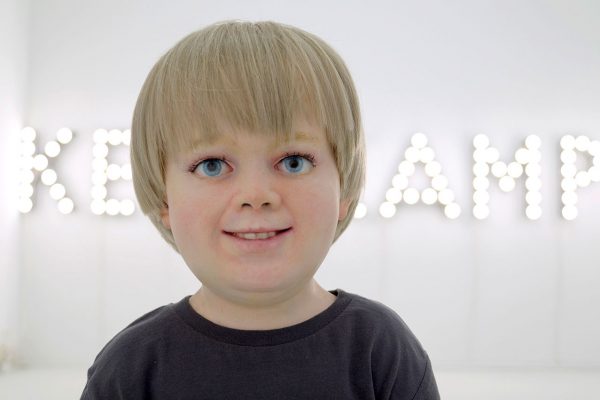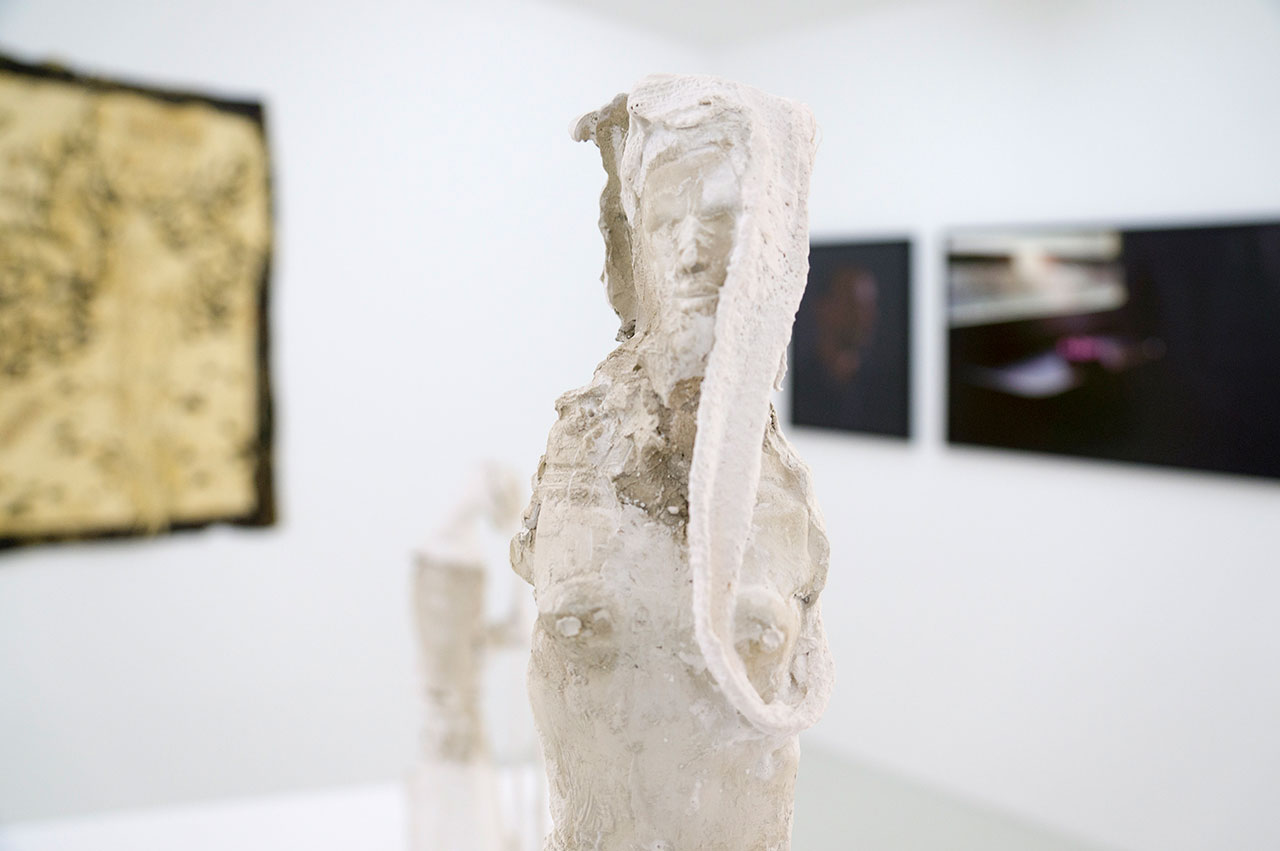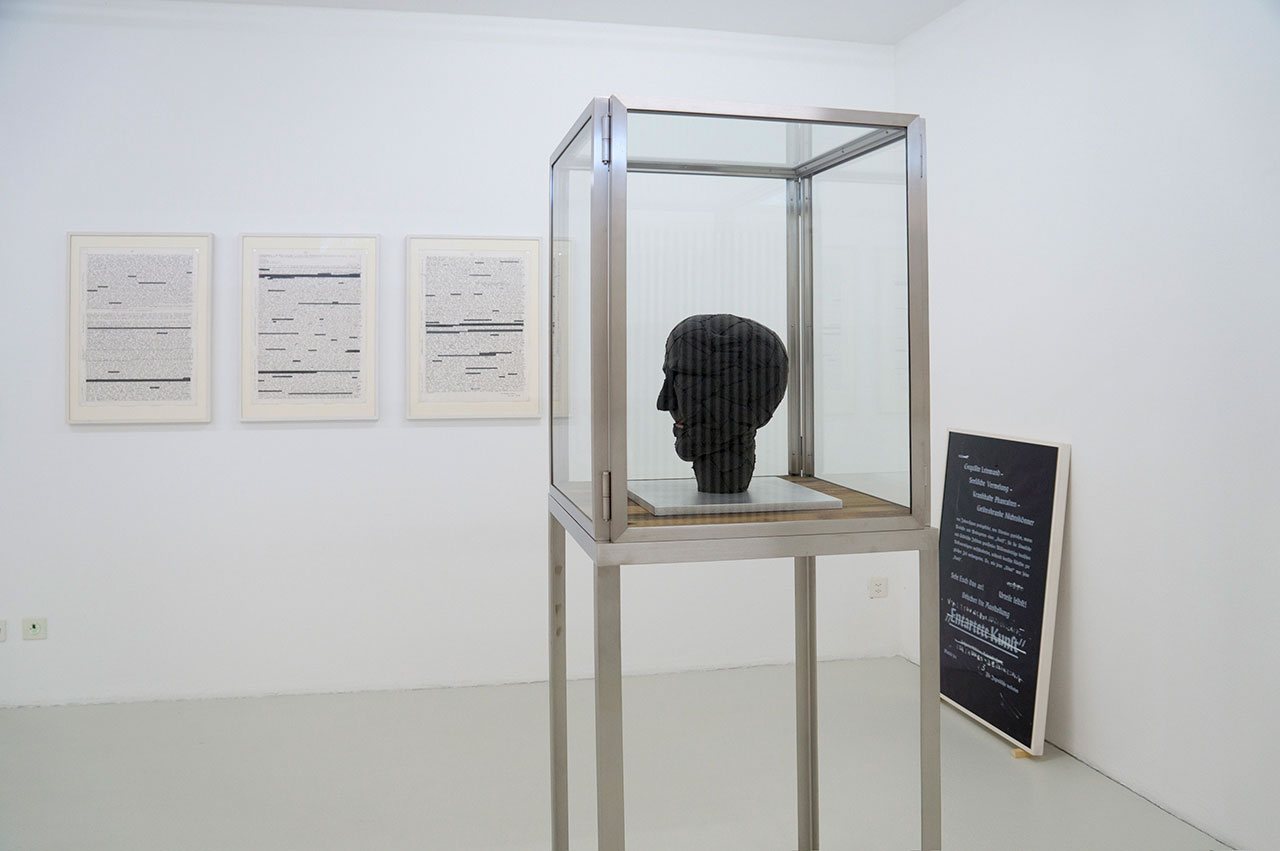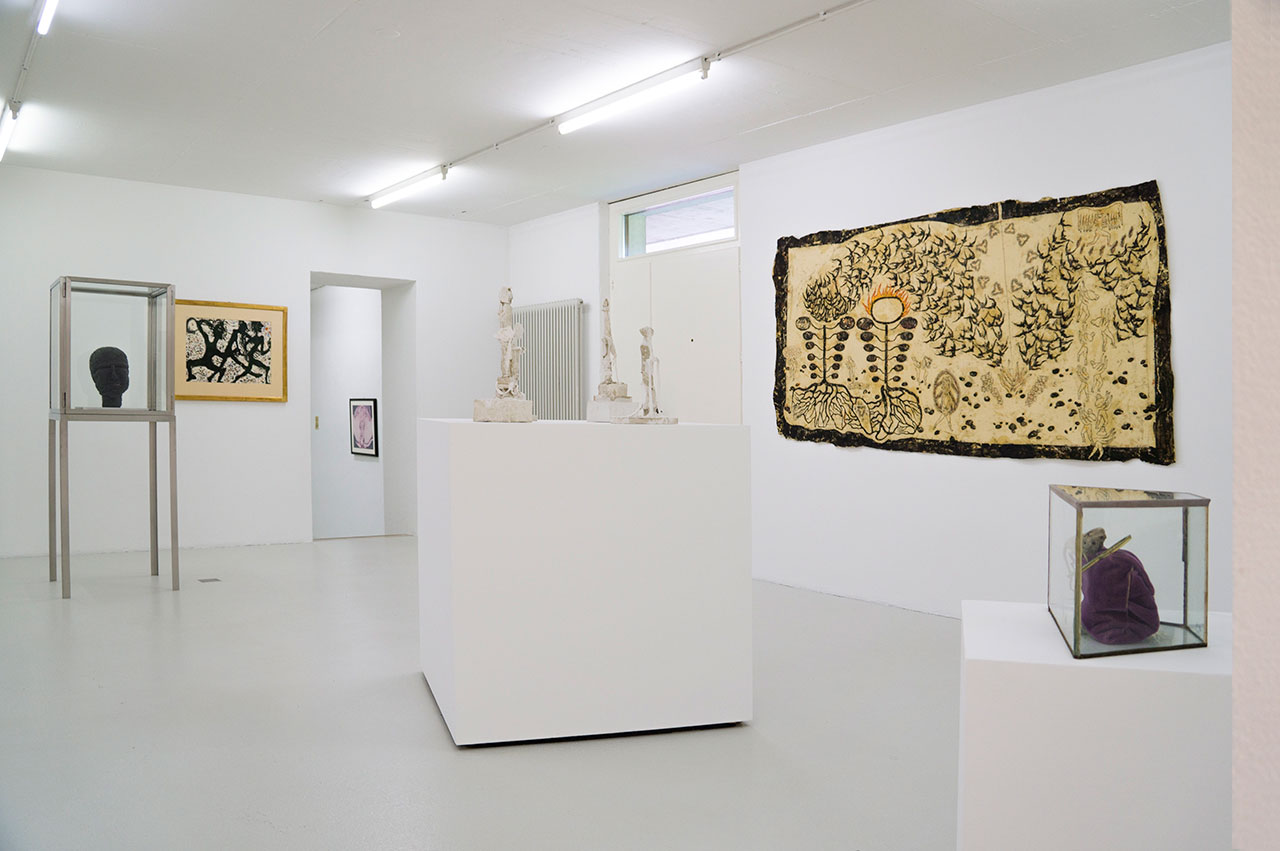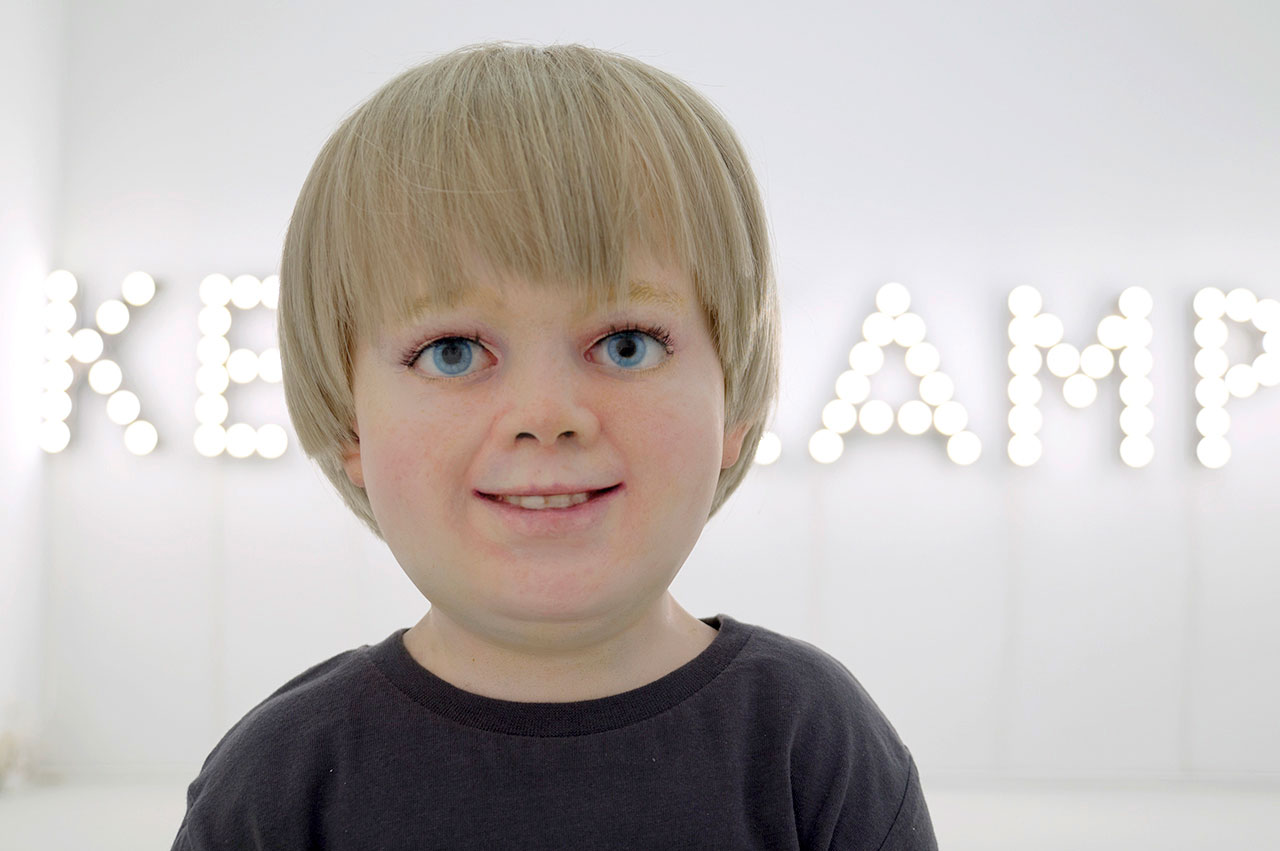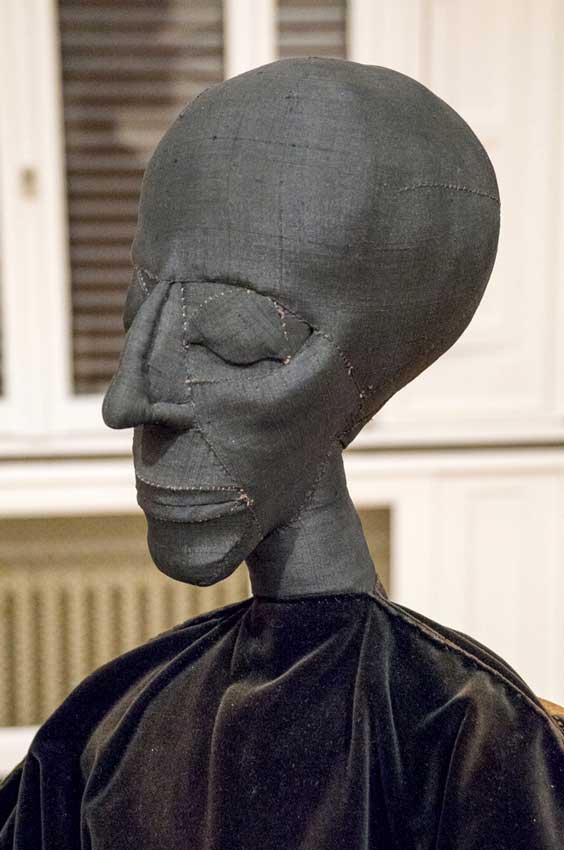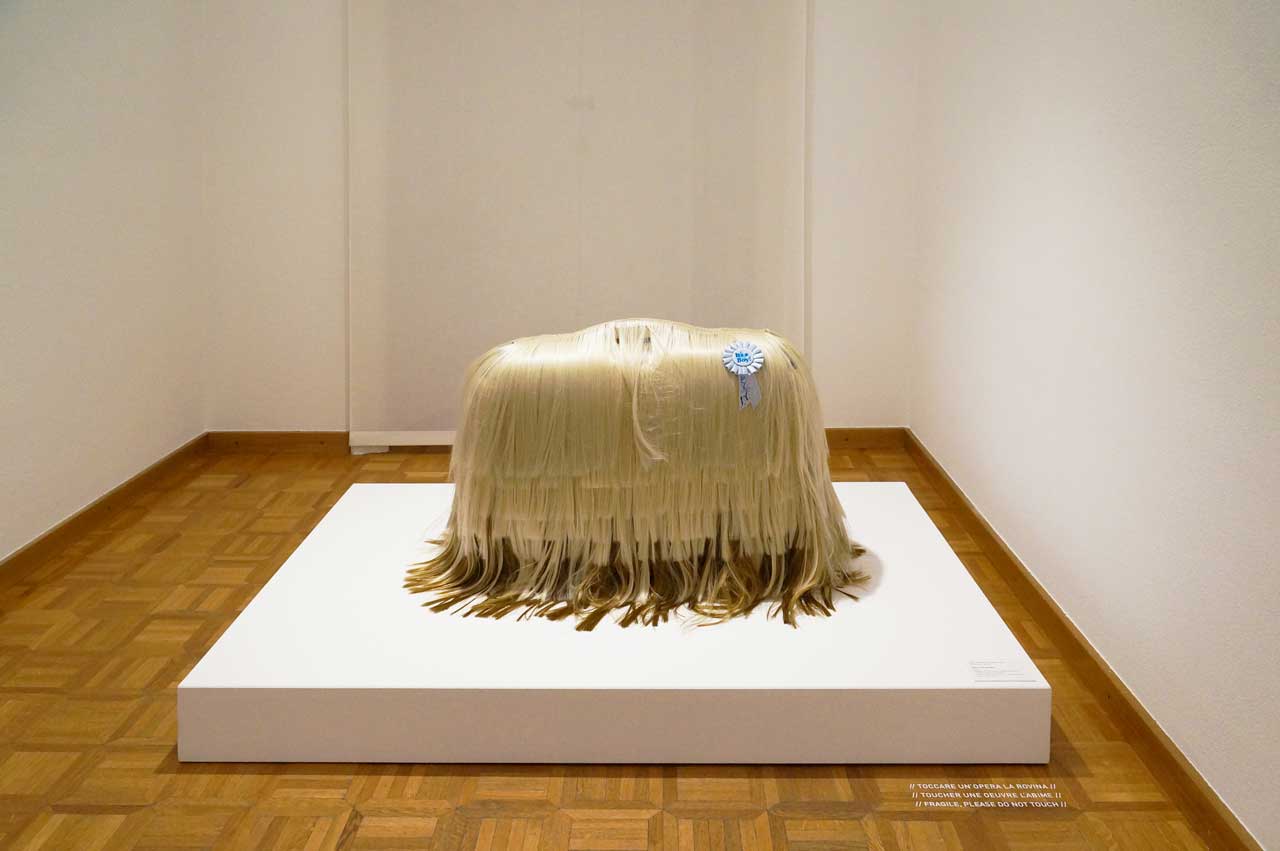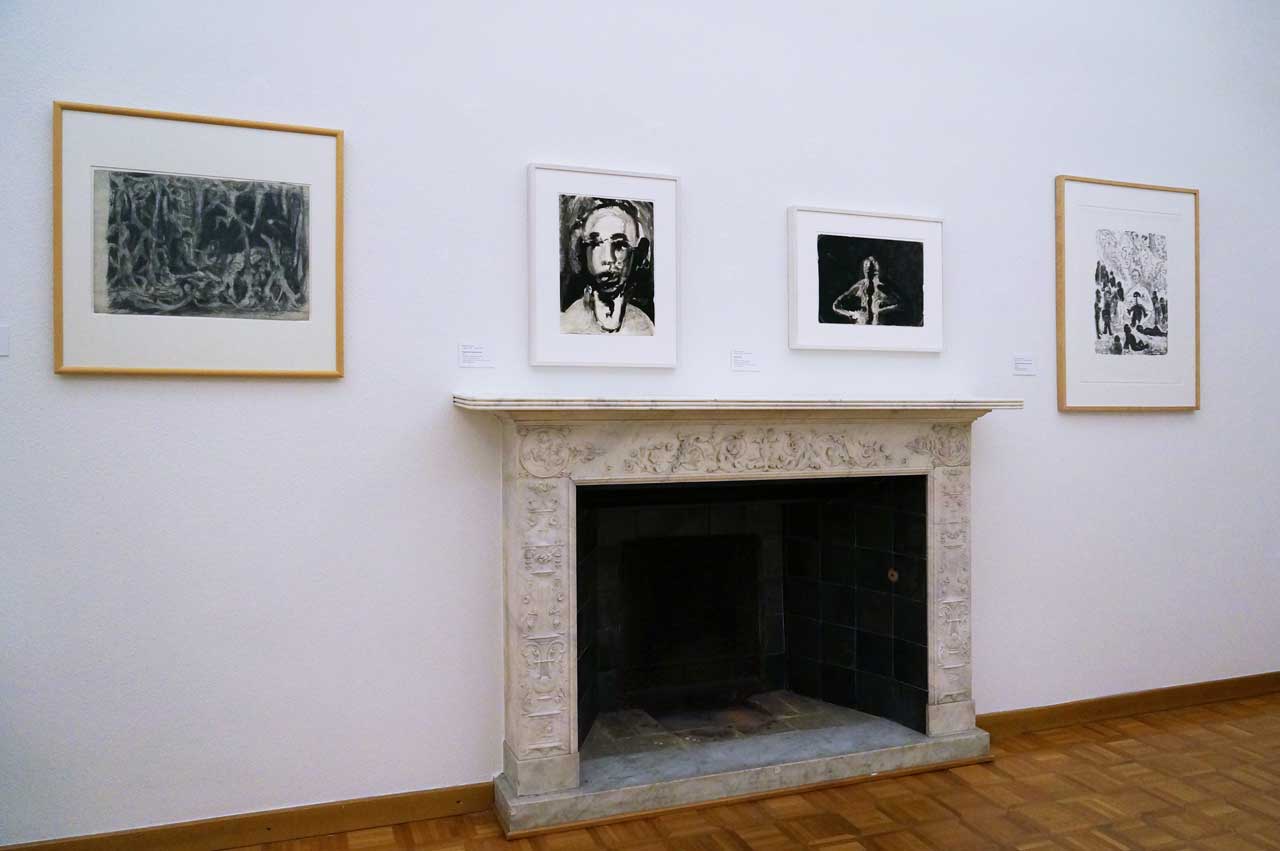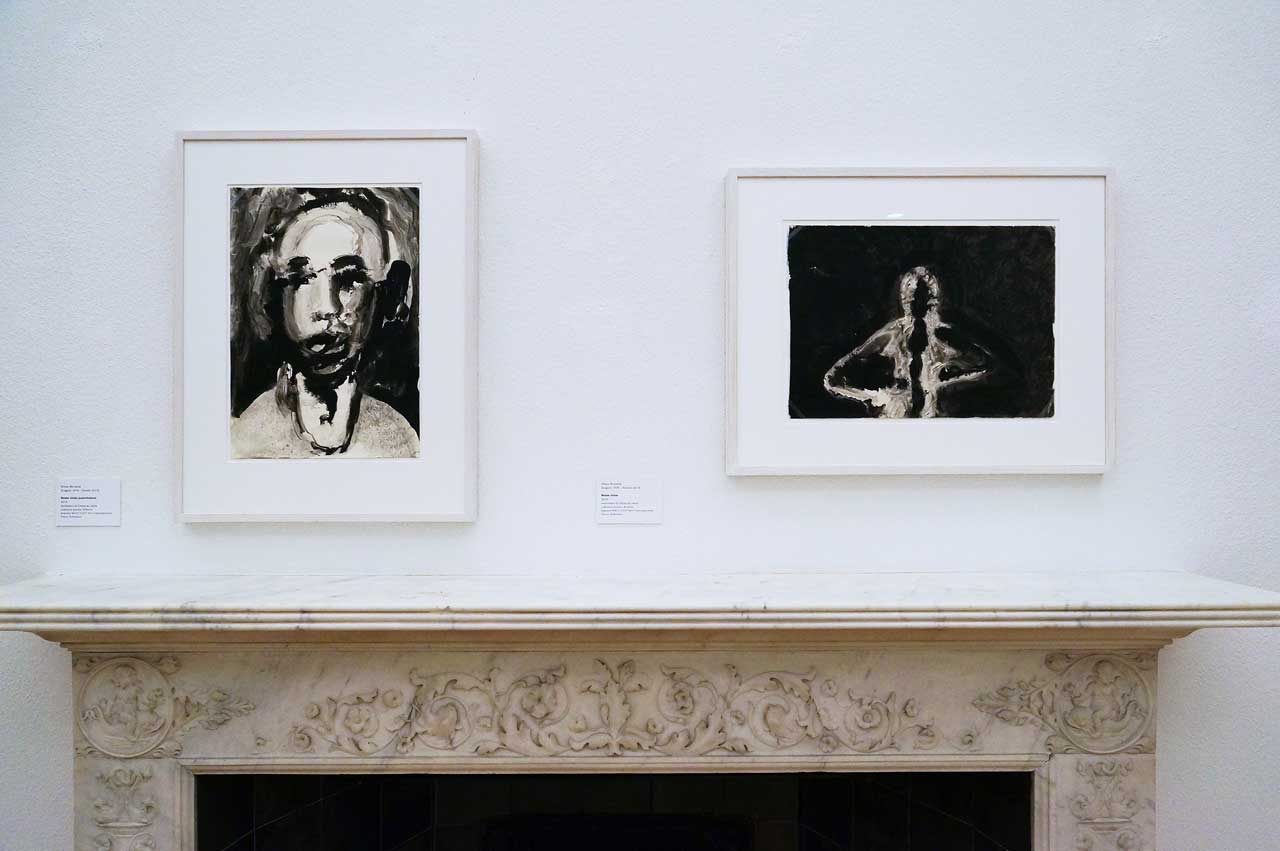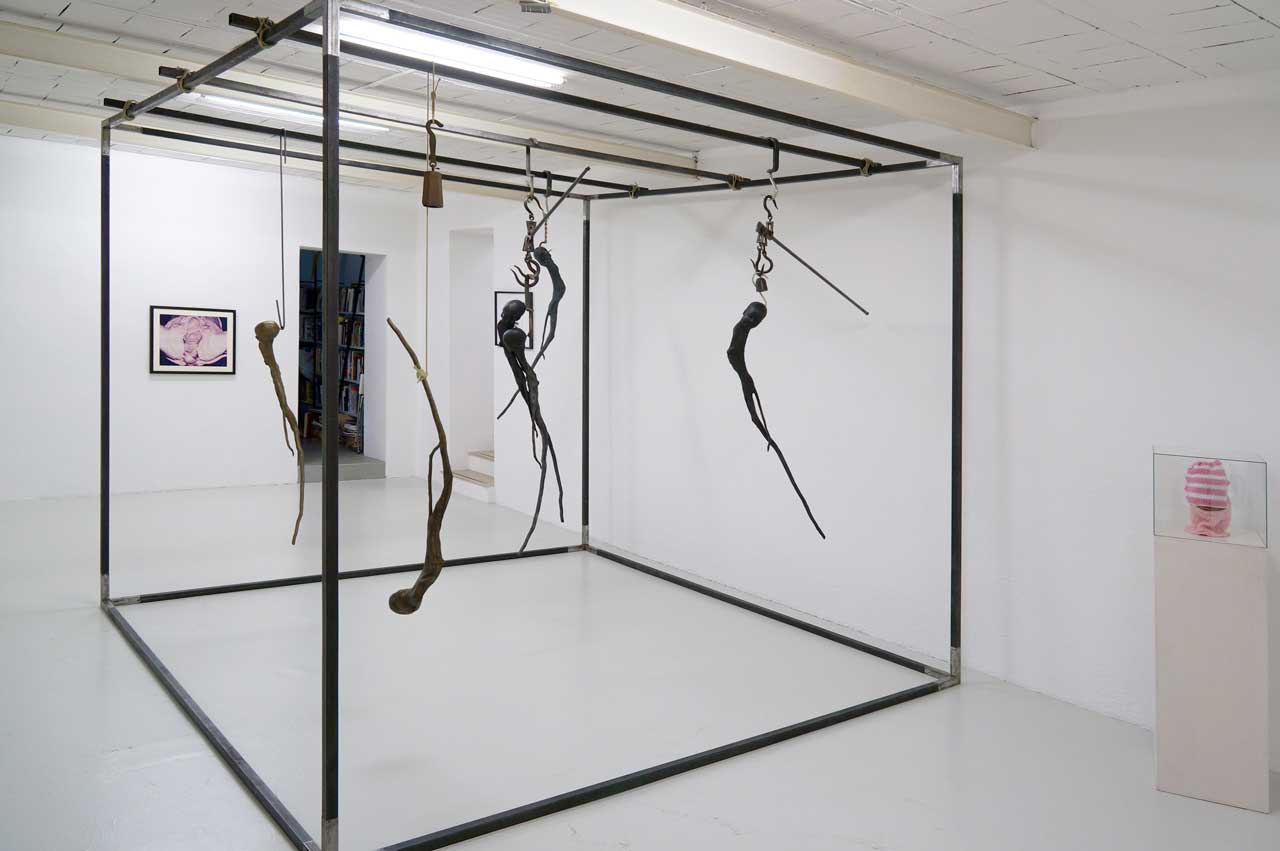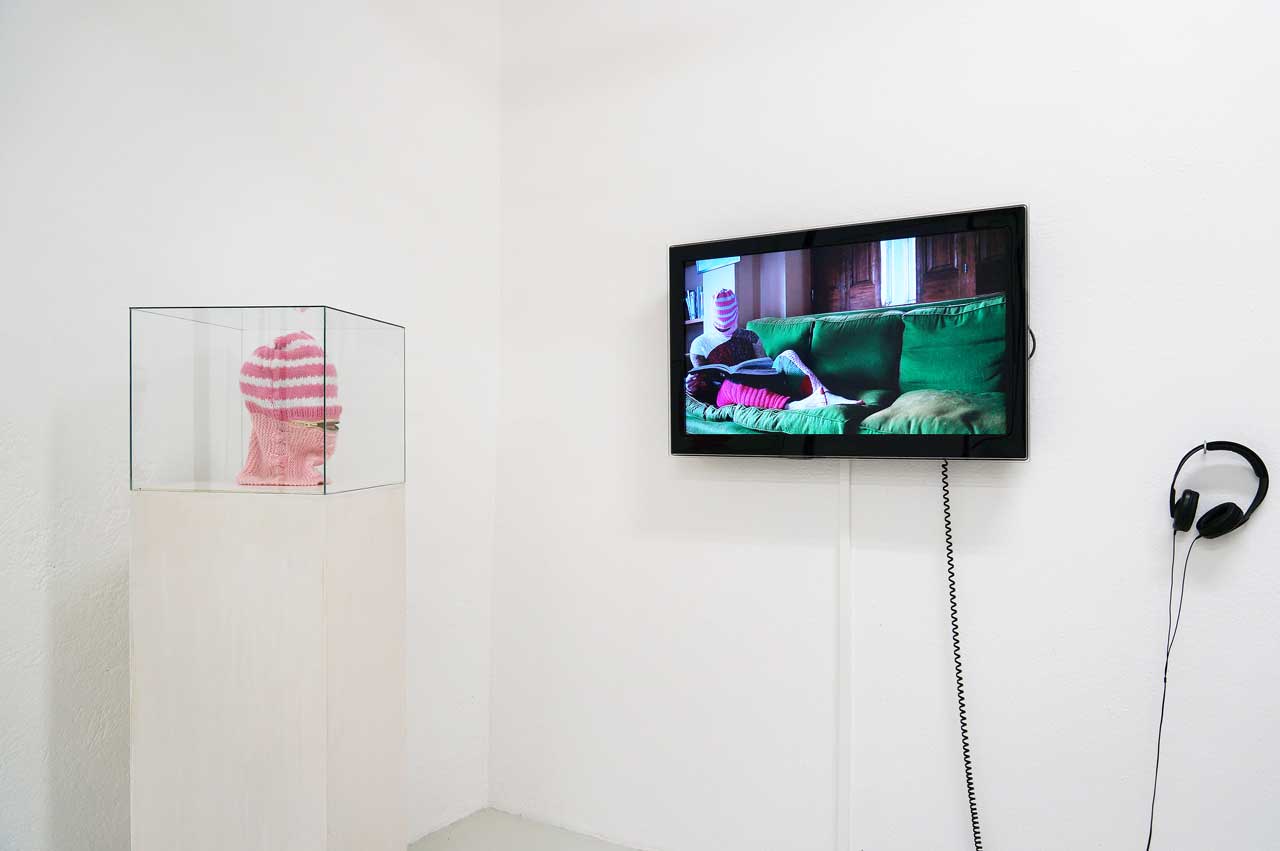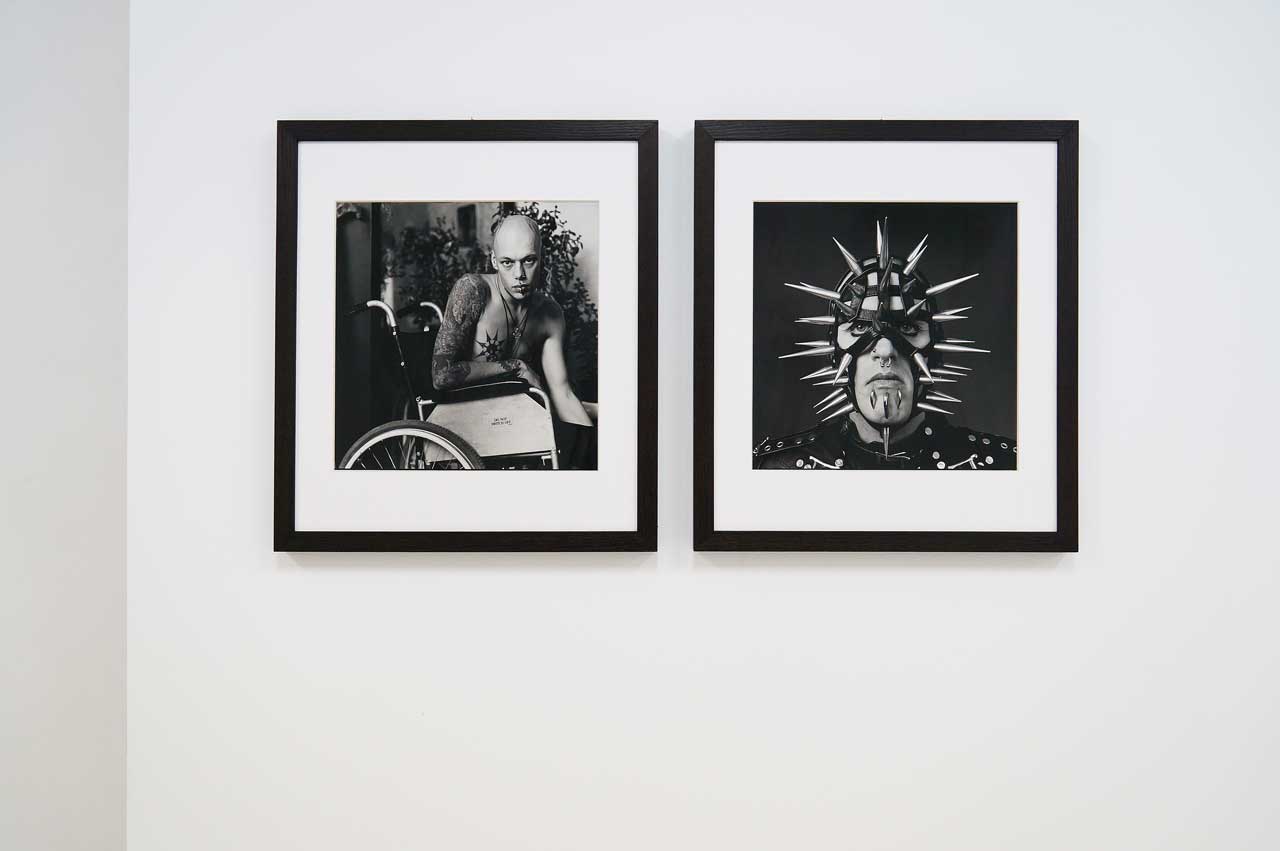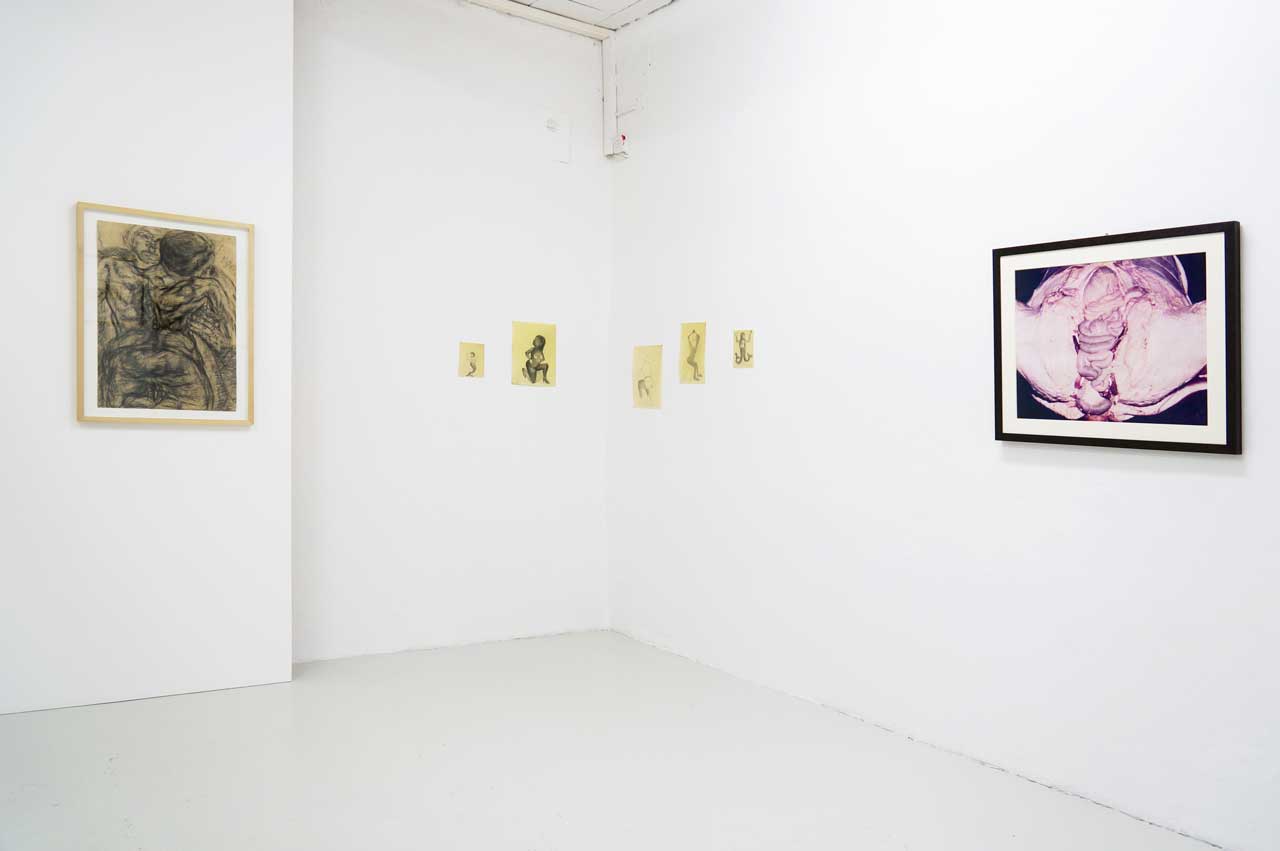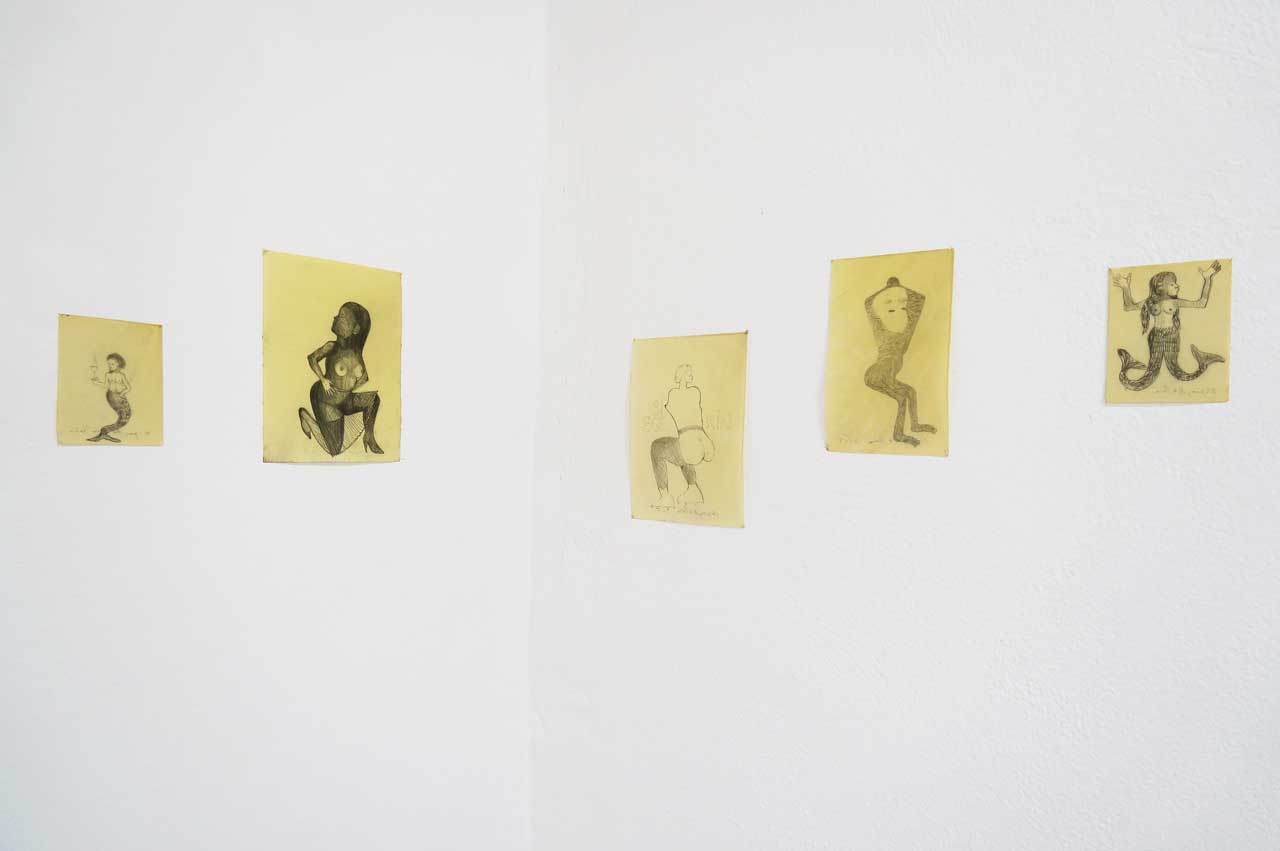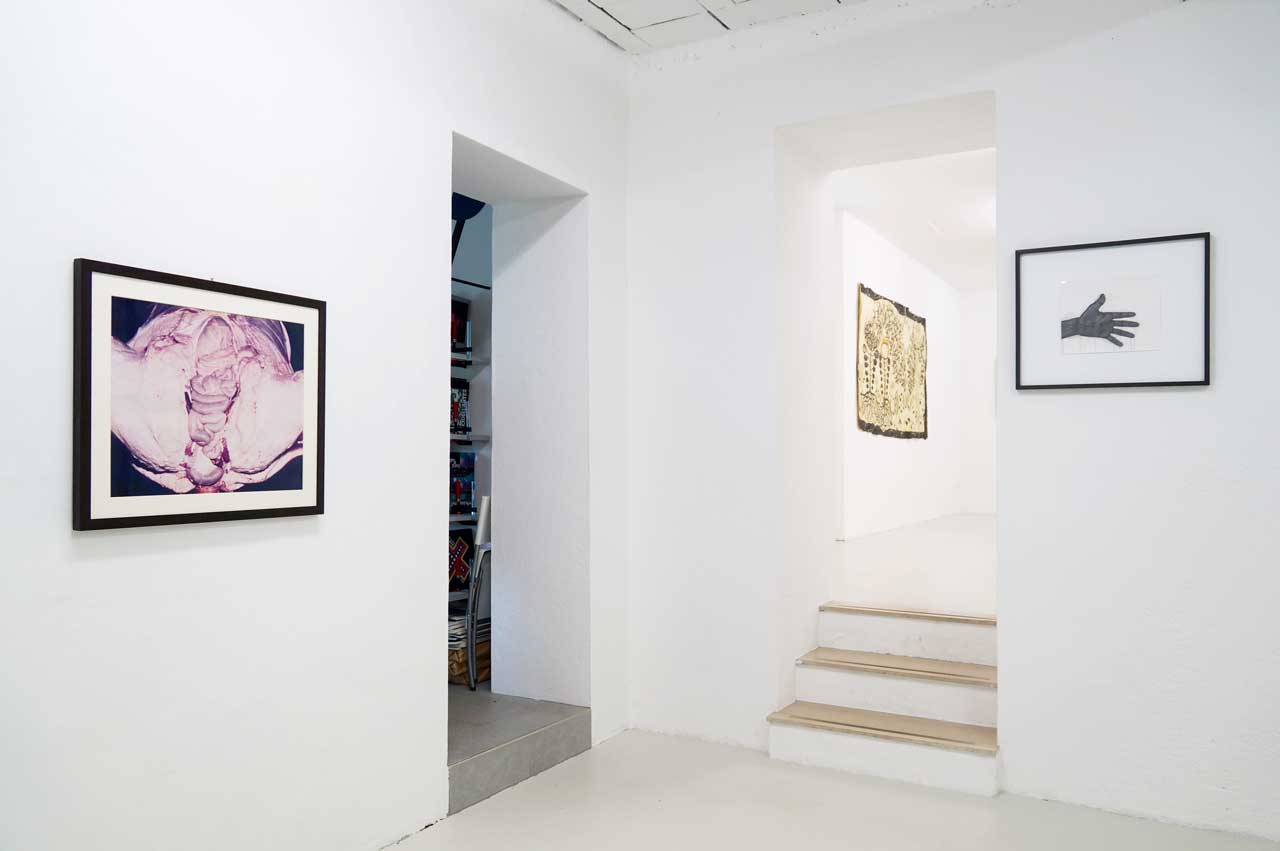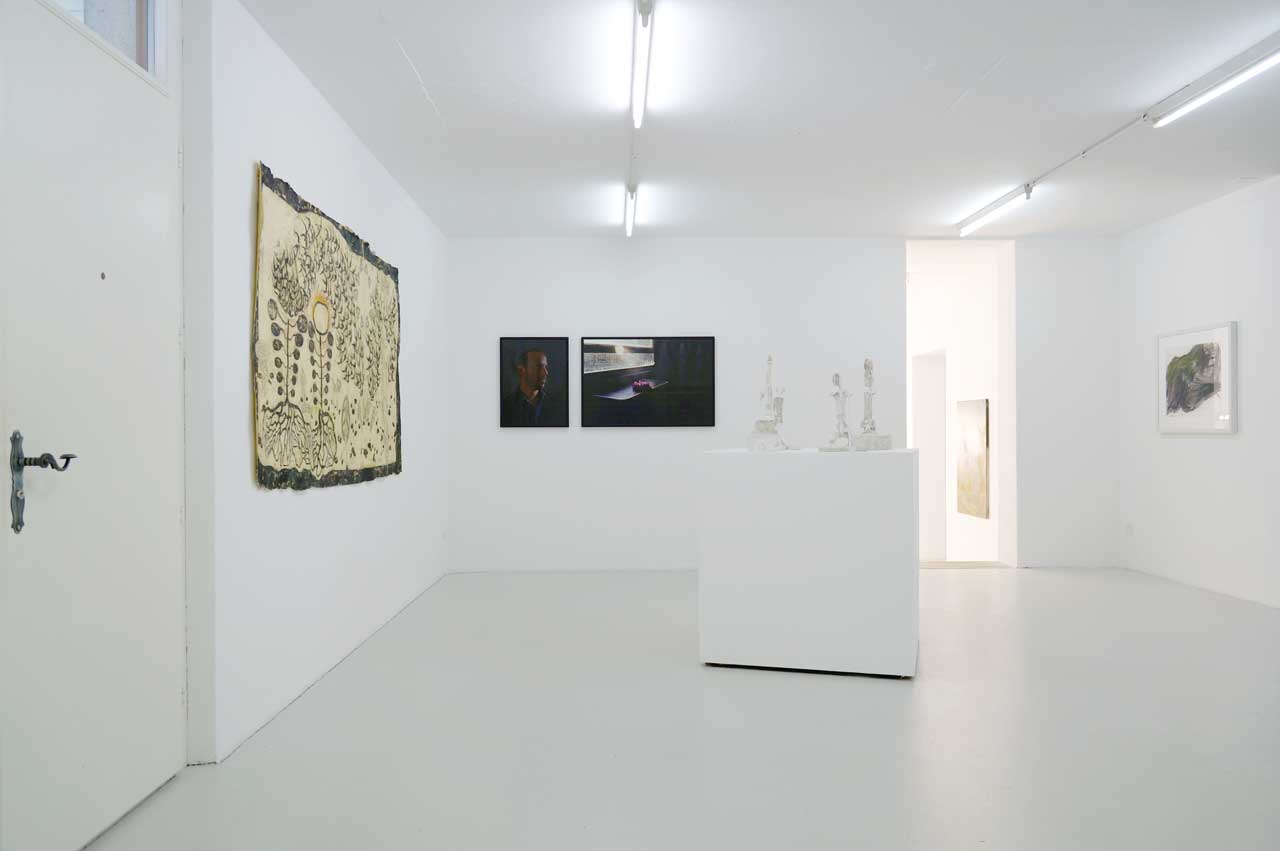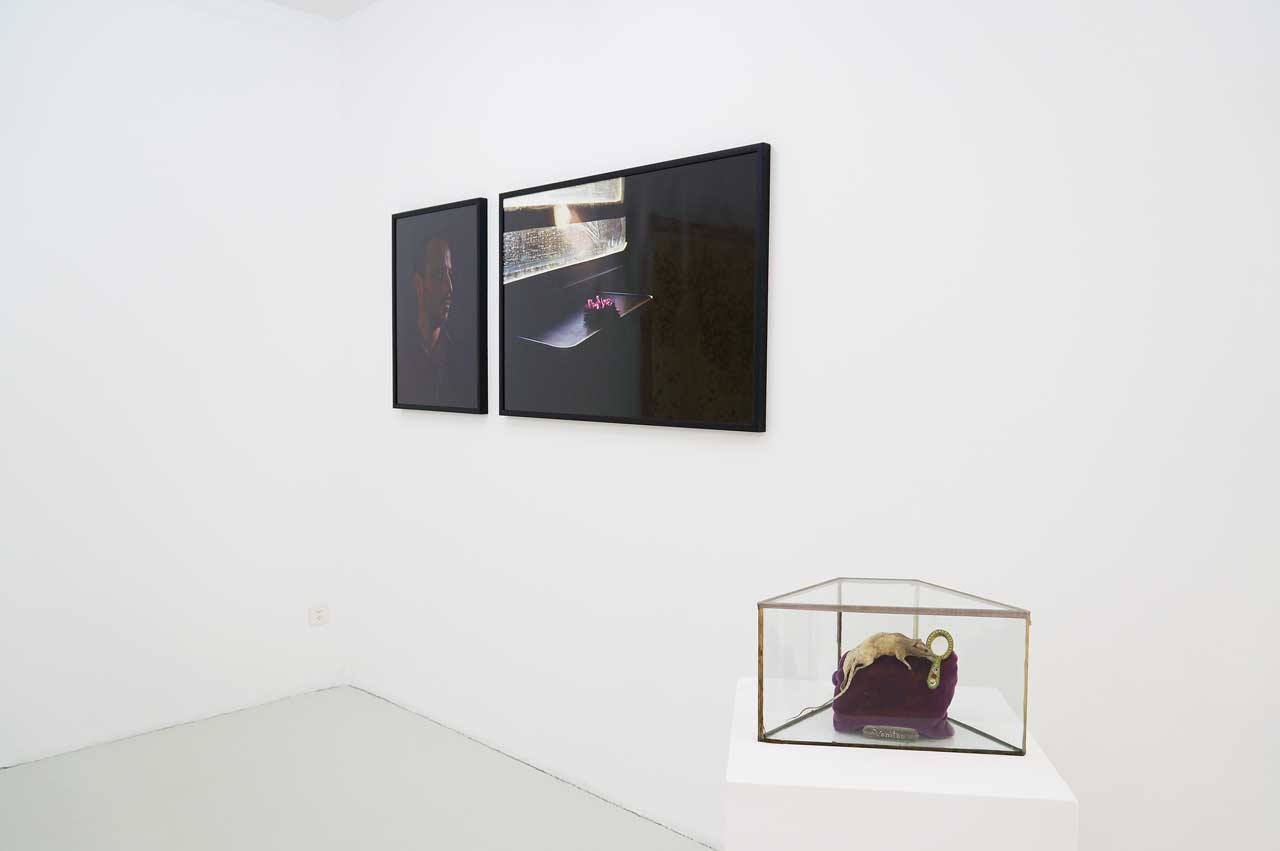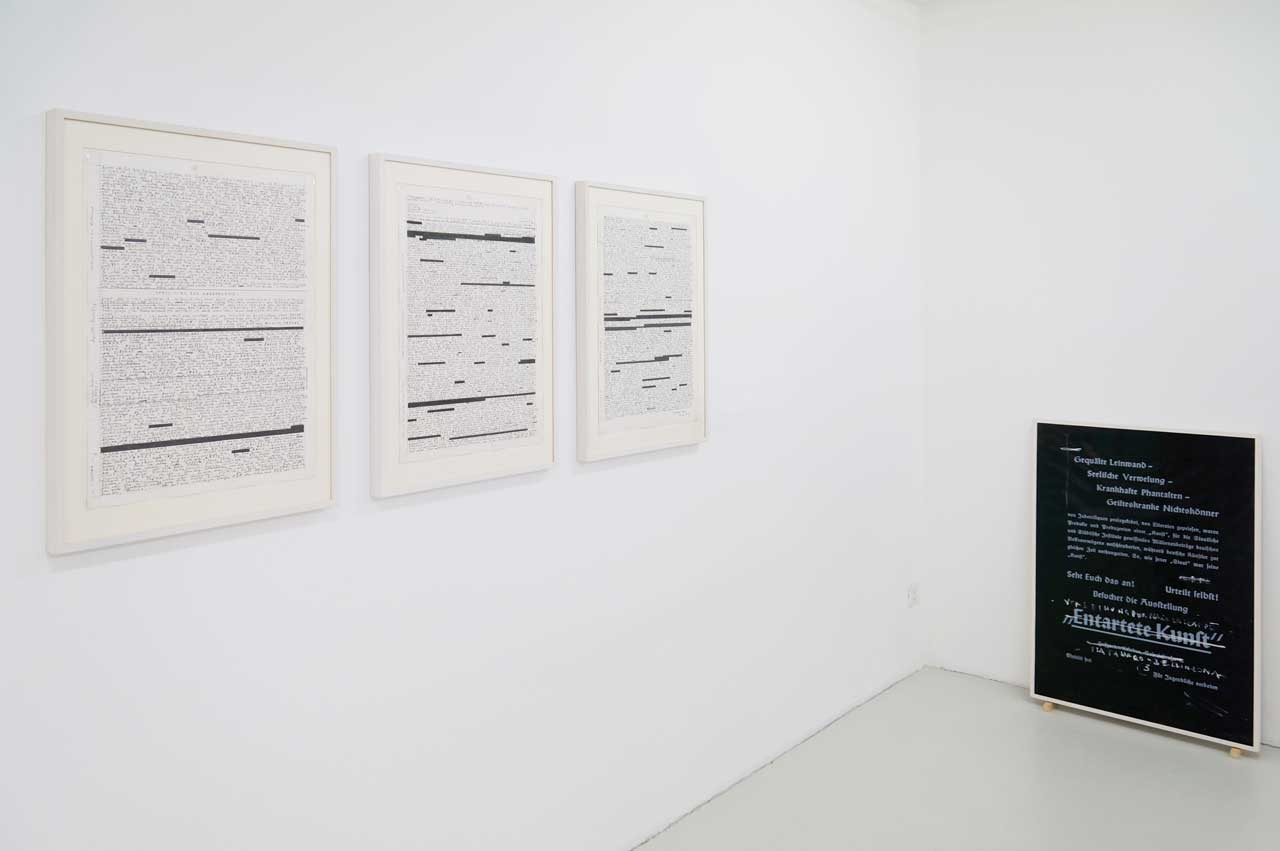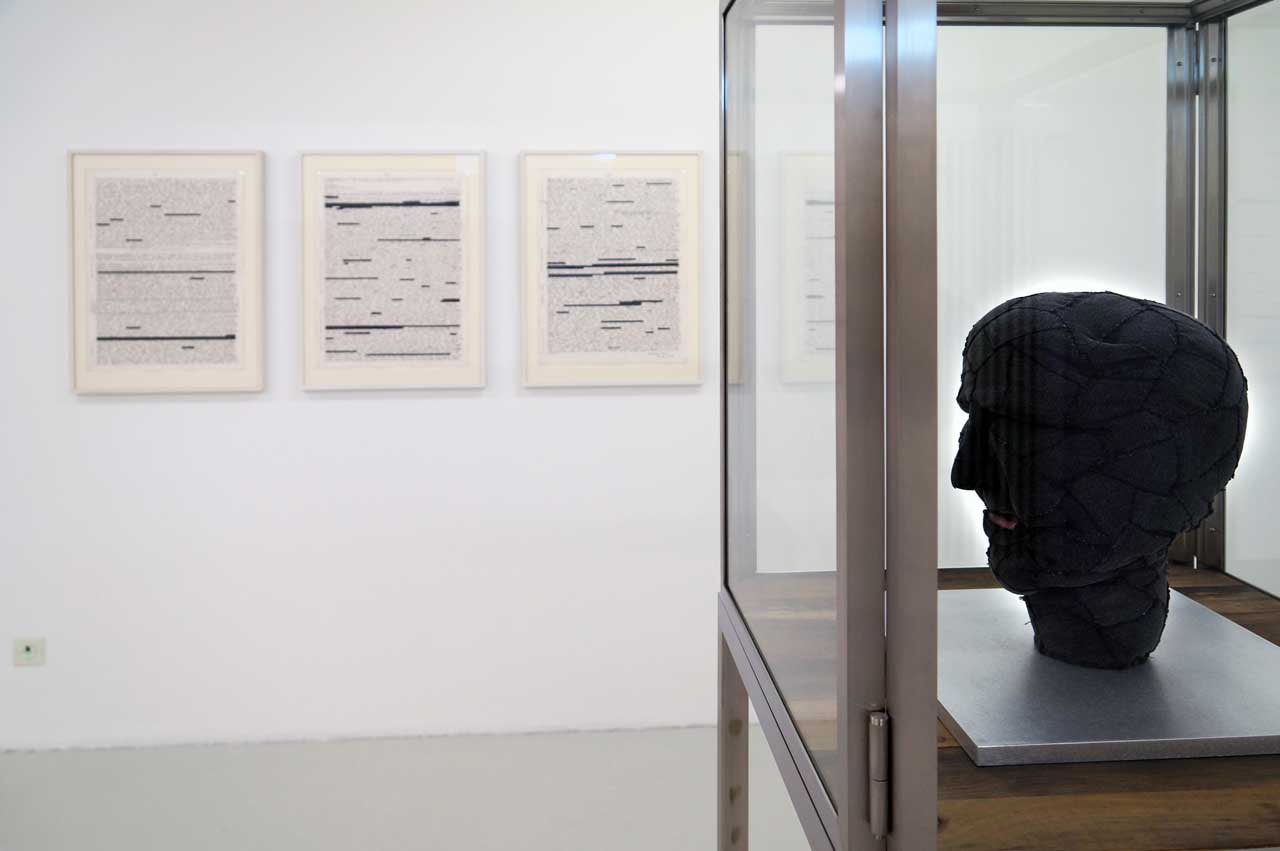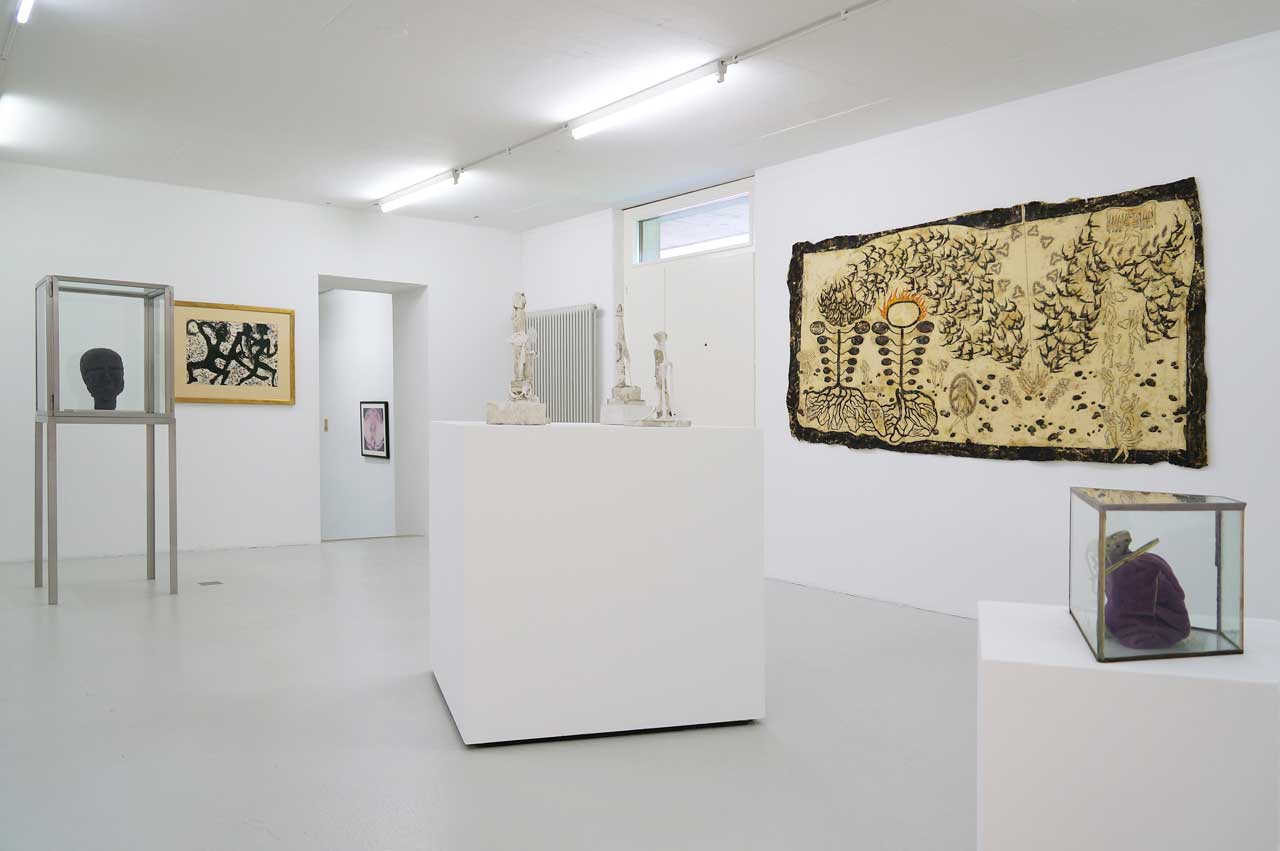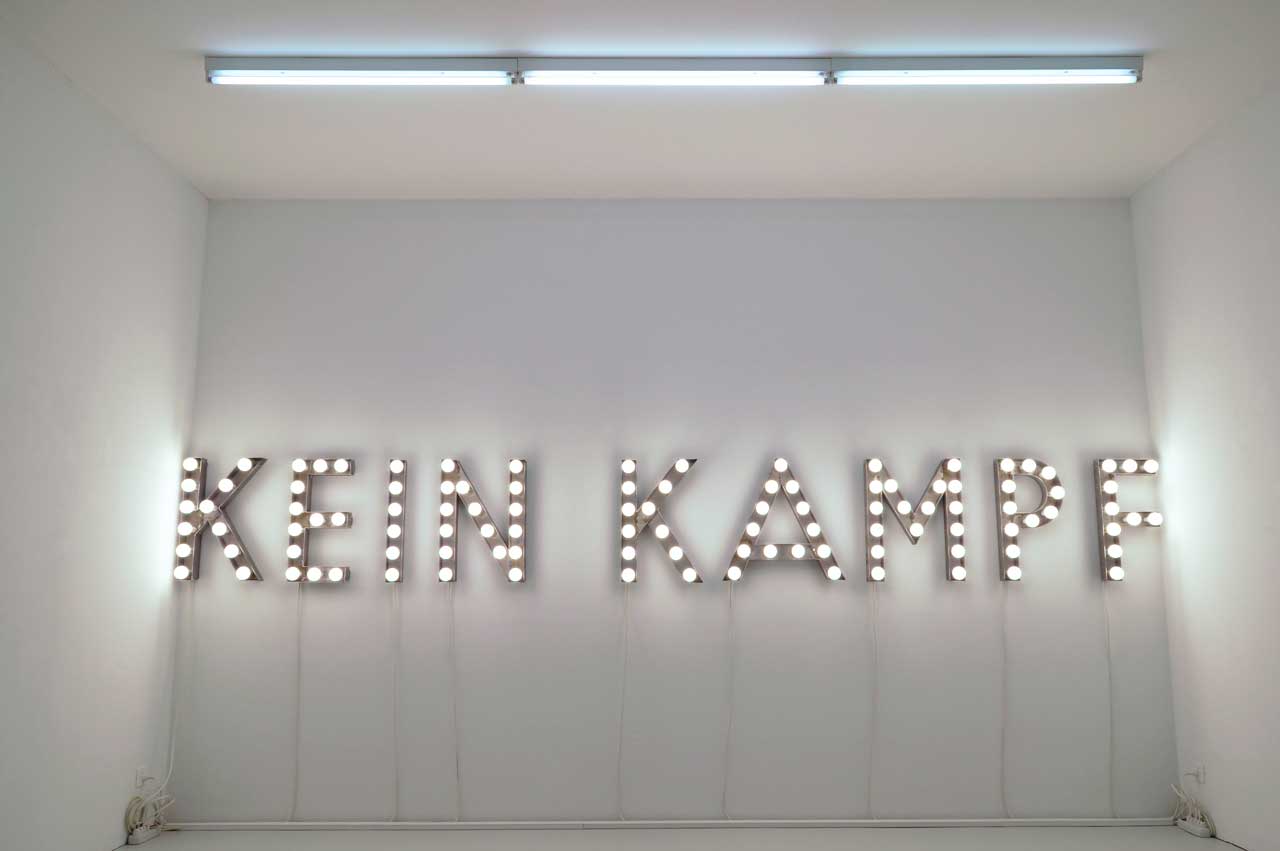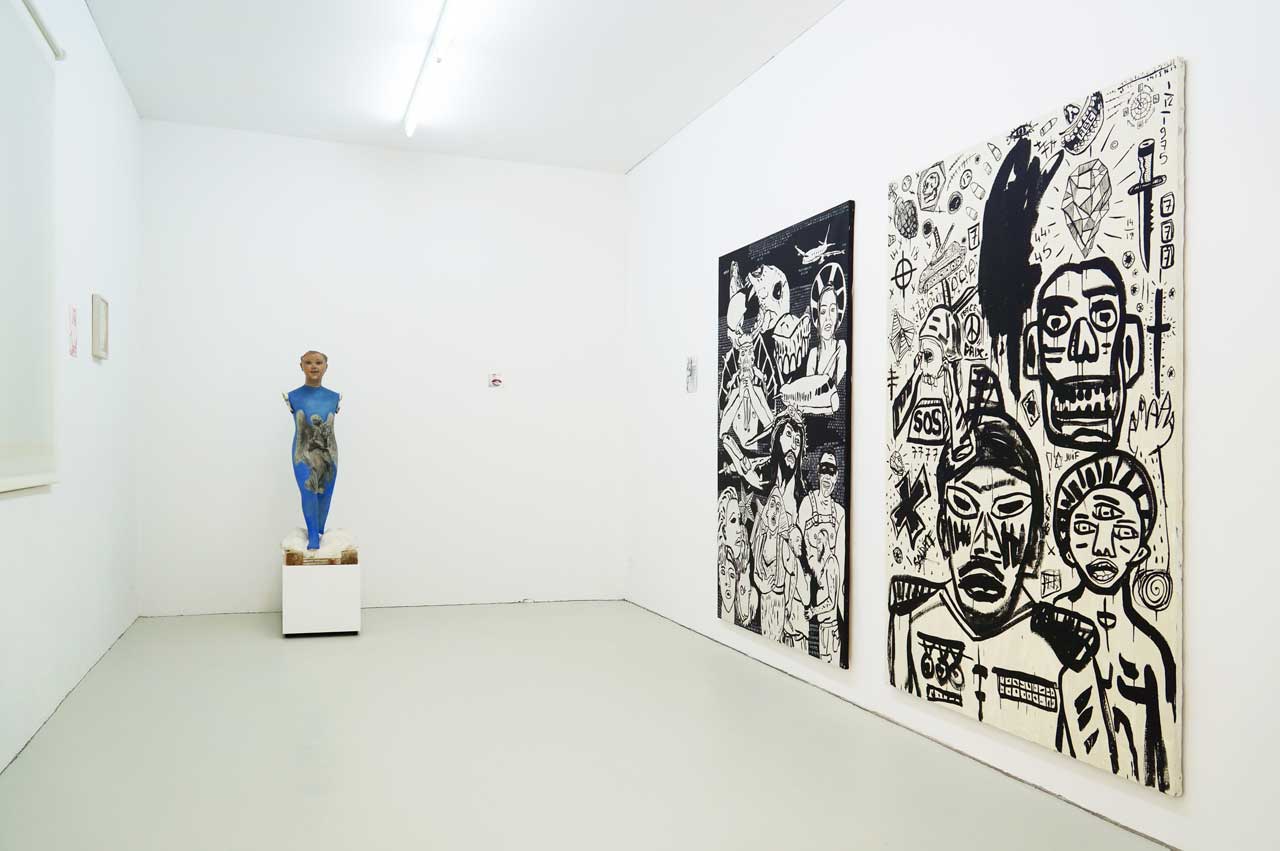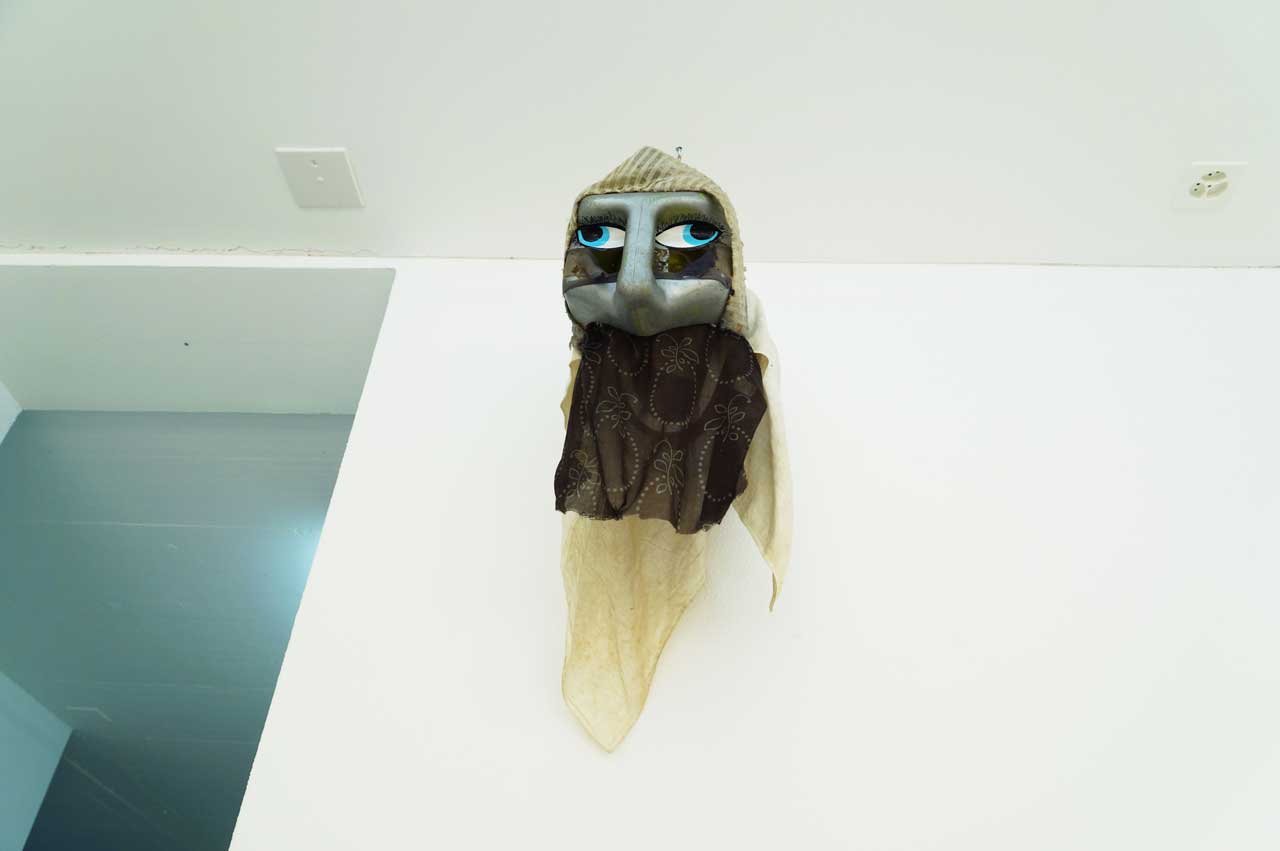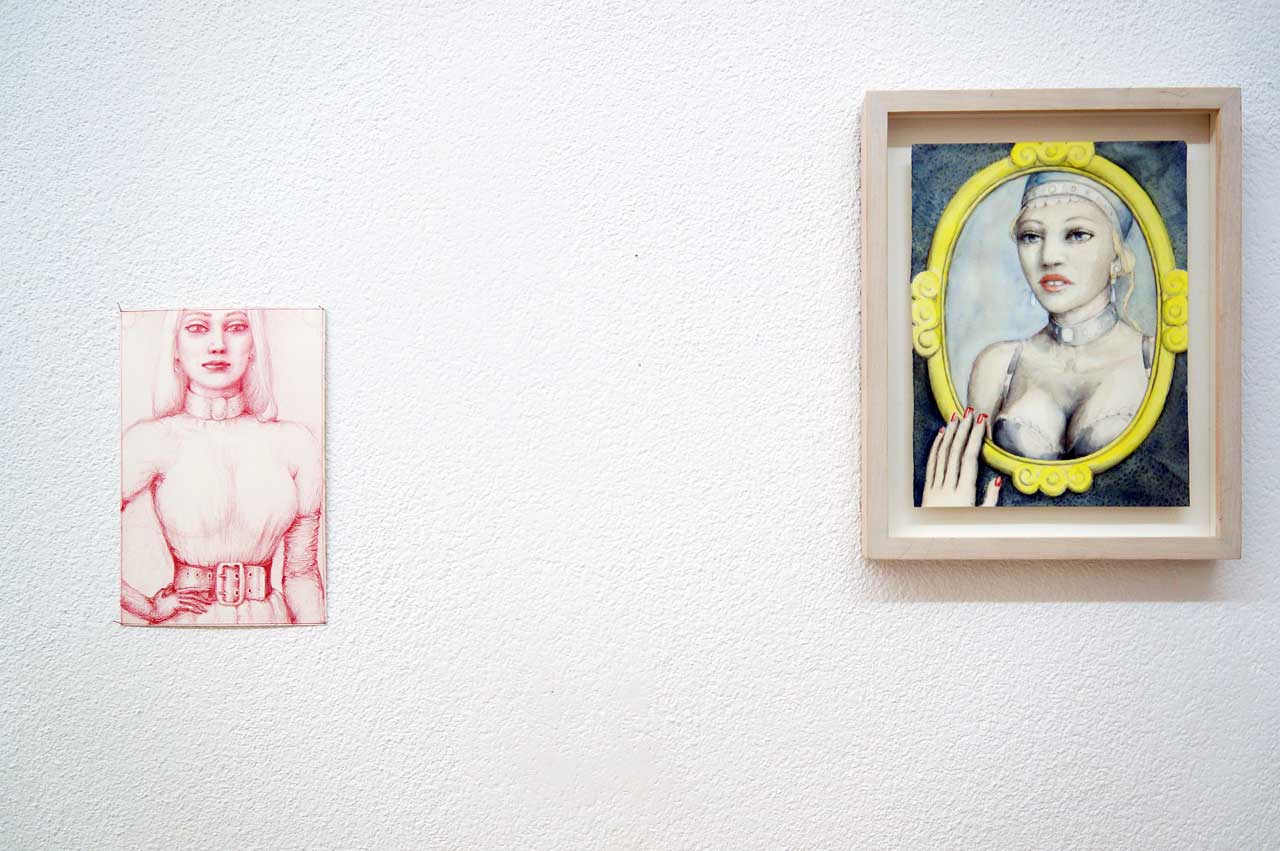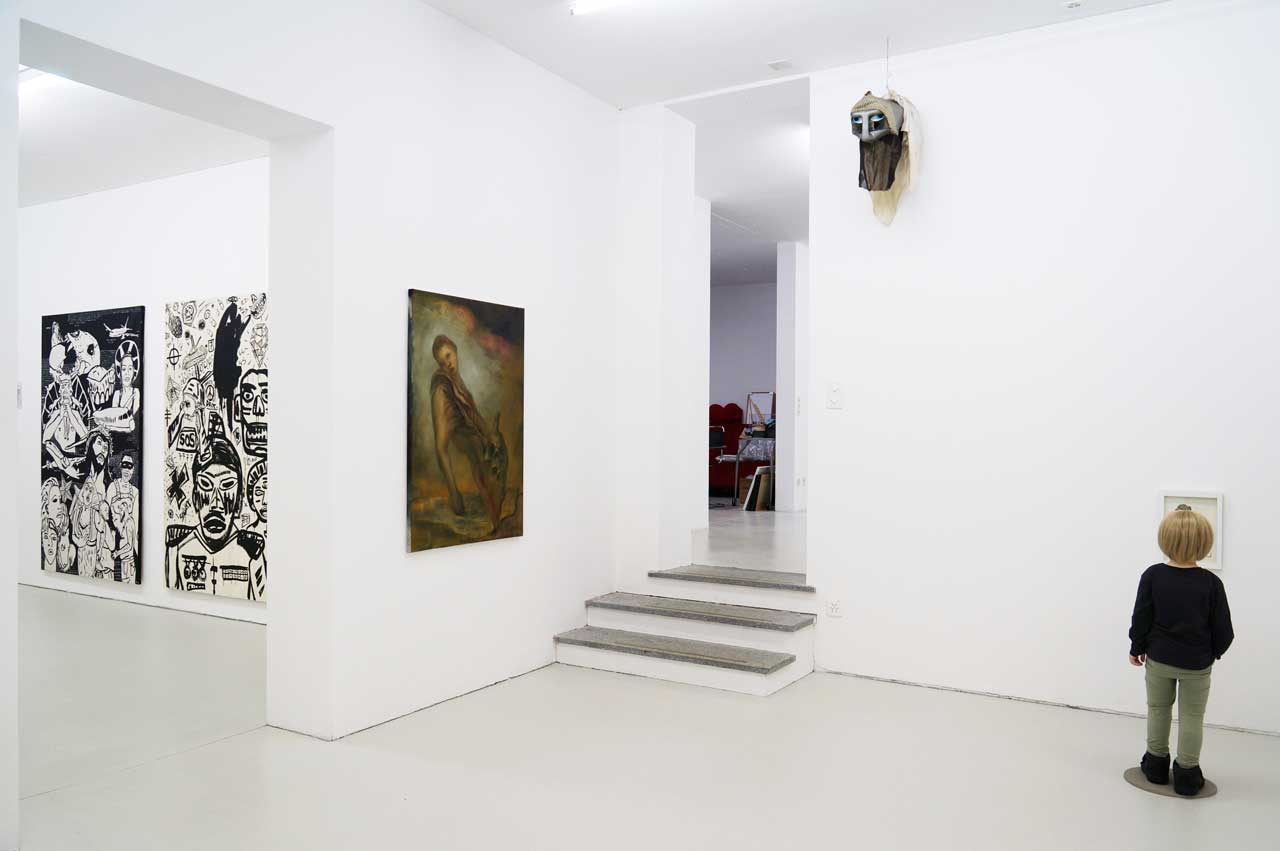Being and Expressing: Reflecting on Degeneration in Contemporary Art. Lyricism and Brutality for an uncelebrated Anniversary.
Eva Aeppli / Antonin Artaud / Katia Bassanini / Giona Bernardi / Jérémie Blanes / Louise Bourgeois / Vannetta Cavallotti / Jean Corty / Carmelo Cutuli / Martin Disler / Nathalie Djurberg / Piotr Dluzniewski / Friedrich Dürrenmatt / Ignaz Epper / Andrea Gabutti / László Győrffy / Lior Herchkovitz / Asger Jorn / Csaba Kis Róka / Mehryl Levisse / Paolo Mazzuchelli / Hermann Nitsch / Meret Oppenheim / Simone Pellegrini / Valter Luca Signorile / Nicholas Sinclair / Chaïm Soutine / Louis Soutter / Wolfgang Stiller / TOMAK / Varlin / Sandra Vásquez de la Horra
11 March – 4 June 2017
An exhibition concept by Mario Casanova.
Curated by Mario Casanova, Mattia Desogus and Carole Haensler Huguet.
The Villa dei Cedri Civic Museum and the MACT/CACT Contemporary Art Ticino in Bellinzona are together hosting the thematic exhibition entitled ‘Verleihung der Narrenkappe (Conferment of the Jester’s Cap). Being and Expressing: Reflecting on Degeneration in Contemporary Art. Lyricism and Brutality for an Uncelebrated Anniversary’. Originally inspired by the work of a Swiss artist who passed away in 1996, whose work – in the contents and methods used to approach the medium – pointed the way towards reflecting about the creative process in general and how it is represented, the exhibition does not miss a chance to expand on the theme, highlighting analytical approaches, and to consider how the world of culture relates with politics and power. This comparison is not always easy, especially in the framework of a dialogue/clash with what is known as the institutions.
Devised by the curators as a heterotopical mental locus of the artist’s freedom and individuality, the approach to the theme takes shape and develops as a platform of reflection about the comparison or the equation between art and folly, setting out to draw the line of demarcation that separates the consensual shared social locus from the space of the artist’s own subjective and unique inner expressions and expressiveness. The theme focuses on what it means to be an artist, but also on what it means to work in practice as an artist from a socio-political and ethical standpoint, not in any specific period in the past, but in general terms, aiming to grasp the root of creativity, of creation and of the mechanisms that bring about a metamorphic transformation in the mental universe balanced on the knife-edge between reality and truth, between money and value. It is in fact around the concept of thinking that the genesis and excrescence of making gradually coagulates. Thinking is a virtual magma of creativity, since the act of thinking in itself is off limits, universal, infinite and unlimited, somehow free of moralisms: it is subjective and rationally irrational.
If we focus our appraisals in a prism of historical parallels and cross-references, it is interesting to observe the recurrence of such mythical and mythological figures as Dionysus and Bacchus who, intent on losing their reason as they let themselves go in the fumes of alcohol, constitute a rather apt representation of the paradigms of ontological man in the course of hi existential/existentialist path from birth to death, restoring the unconscious and the process of moral degeneration in (dis)equilibrium between Sacred and Sacrilegious.
While morality for Friedrich Nietzsche (1844-1900) was an important aspect of the bourgeois social convention as a direct consequence of healthy, honourable relations of commercial exchange (cf. On the Genealogy of Morality, 1887), we find that Zarathustra somehow incarnates the breach of these historical and cultural precepts, overcoming them, for better or worse, in the move towards a new identity of the Superman.
This opens the door to another world, yet it is an unknown door – the door of art and of free will – that distracts us from the usual way of interpreting the phenomena around us that we call ‘bourgeois’, but which in actual fact refer to the wretched social class that still today feeds off and thrives on money and commercial exchange.
From the pleasant yet perverse relationship between power and art comes a figure of the artist who is sarcastic and mad, satirical and a hybrid, a sort of court jester who nevertheless manages to grow apart from reality and disregard it.
The artist and his thoughts are too free, too virtual, in fact, and the relationship between art and the market has undergone substantial change over time.
In the early years of the twentieth century, one consequence of the fall of the absolutist aristocracies was that power became a political matrix and calls for republicanism adapted to attribute a different and in some ways pernicious form also to the concept of culture and of mass homogenisation, which in due course led to serious reactions that were also dangerous for freedoms both individual and collective.
In 1937, Adolf Hitler took a heavy-handed interest in this issue, when he commissioned Goebbels to inaugurate the exhibition of ‘Entartete Kunst’ (Degenerate Art), focusing attention back on the economic difficulties faced by Germany at that time and attributing the responsibility for the world’s problems to certain social and racial categories, in particular the Jews, people who were different and thinkers, all guilty of having adulterated the Aryan identity.
When the museums were purged of all the art that was considered to be contrary to Germanic culture, the result was that it helped amplify the theories of racial inequality, just as the concept of ‘degeneration’ applied to art gradually changed with time and depending on historical and geopolitical situations, adapting its forms and winning over other cultural contexts, such as the dark moments of Soviet culture under the Stalinist dictatorship or Maoism in China. Hitler’s National Socialism totally outlawed every form of what is generally lumped together as ‘expressionism of the soul’, a much-reviled term that was used astutely by the political regime in those days to determine or at least to generate a specious sense of degeneration of artistic creativity, of free thinking and of society’s moral decay.
The title of the exhibition ‘Verleihung der Narrenkappe’ encapsulates this postulate, the degeneration not so much of art as of the relationship between power, art and expressive freedom. The moment in history that we are currently experiencing brings back memories we believed we had put away for good, confirming how much history repeats itself and that our conscience is unequivocally subordinate to being exercised in culture.
This, then, is when the artist became Mr Josef K. in Kafka’s The Trial (1925), or better still Gregor, the main character in The Metamorphosis (1915), where an apparent inability to relate to reality and to express his own artistic and creative freedom creates otherness in Gregor, as it does when he found himself transformed into an enormous insect.
It was actually in the transition from the nineteenth to the twentieth centuries that the parameters of fragmentation and, paradoxically, the pronouncement of the marginalisation of certain social issues were defined, not least as a consequence of the discovery of psychoanalysis and of the studies of Lombroso.
We have never – not even now –managed to conceive of individuality as an added value: instead, we tend to see it as a sort of continuous incarnation of discrimination, an element of dangerous disturbance. ‘Verleihung der Narrenkappe’ constructs a platform where plausible pawns are moved to launch into a discussion about the issue of the relationship between creativity and folly, or between culture and power in a society of consensus.
You might almost think that the demarcation line between this side and the hereafter is very transient, tender and always too fragile in a society focused on homogenisation and based on a tidy alphabetic model, where the relationship between majority and minority, between what is considered to be right and what on the other hand is said to be beyond the pale, is defined with violence.
Something new and impetuous was created throughout the entire last century: the concept of the mass and a regime of subjection of culture to the diktats of democratic politics and to what is known as the ‘common weal’, where Bentham’s Panopticon is not just a model to imitate, but becomes the very sap of a system of social communication, whose ultimate aim could well be to strengthen consensus and annihilate individual opinions.
Within this new socio-political set-up, art is an island that is not there, a never-never-land of frustrated delights and contrasted subjectivity. The jester is the artist, but he is also the ‘other’, often the one who is either above or below a social mean, just as the concept of the ‘conferment of the jester’s cap’ aptly represents the metaphor of the human condition of those who exist beyond the pale of a regime.
The relationship between art and power, with its mysteries and its obsessions – maybe actually brought about by desires that remain unfulfilled or unheard – certainly constitutes this enigmatic combination that binds body and soul together, yet at the same time sets them inexorably in opposition, almost as though we were all condemned to decide for one or for the other, in the hope and the vain illusion of change towards the ideal and the universal.
Mario Casanova, Tel Aviv, 2017
Translation Pete Kercher
Special thanks are due to Kunstmuseum Bern, Expressionismus-Stiftung beim Kunstmuseum Bern, Helvetia Kunstsammlung Basel, Collezione Giuseppe Iannaccone Milano, Collezione d’Arte Matasci, Bibliothèque Nationale Suisse, Fondazione Ignaz & Micha Epper Ascona, Famiglia Cavallotti Bergamo, Hauser & Wirth Zürich, Lisa Wenger, Alice Pauli Lausanne, Katz Contemporary AG Zürich, ACB Gallery Budapest, Várfok Galéria Budapest, to the artists and anonymous collectors for the loan of their works that made this exhibition possible.
MACT/CACT Suisse enjoys the financial and cultural support of Republic and Canton of Ticino/Swisslos, Alfred Richterich Stiftung Kastanienbaum, City of Bellinzona, Friends of MACT/CACT, the Collectors and the Artists.
Cover images: 1. Carmelo Cutuli (1974), Erma, 2016. Plaster. Courtesy of the artist;
2. (from left to right) TOMAK (1970), Verleihung der Narrenkappe, 2017. Pencil on paper. Courtesy of the artist.
Louise Bourgeois (1911-2010), Untitled, 2002. Fabrics, aluminium, wood, glass. Courtesy Hauser & Wirth Zurich;
3. (from left to right) Louise Bourgeois (1911-2010), Untitled, 2002. Fabrics, aluminium, wood, glass. Courtesy Hauser & Wirth Zurich.
Louis Soutter (1871-1942), Les Broussailleurs, 1937-1942. Black ink and tempera on paper. Matasci Art Collection, Switzerland.
Hermann Nitsch (1938), Aktion, 1970 (approx.). C-print. Vintage. Private collection, Italy.
Carmelo Cutuli (1974), Plasters. Courtesy of the artist.
Simone Pellegrini (1972), Vela ambra, 2007. Mixed media on tracing paper. Courtesy the artist.
Meret Oppenheim (1913-1985), Vanitas, 1969. Objects, glass. Private collection, Switzerland;
4. László Győrffy (1976), The Angel of Revenge, 2013. Polyurethane resin, wig, real clothes, wood. Courtesy Várfok Galéria Budapest.
Valter Luca Signorile (1965), KEIN KAMPF, 2014. Metal, lights, cables. Private collection, Switzerland (background).
Ph. Pier Giorgio De Pinto © PRO LITTERIS Zürich.
VERLEIGUNG DER NARRENKAPPE. ESSERE ED ESPRESSIONE.
RIFLESSIONI SULLA DEGENERAZIONE NELL`ARTE CONTEMPORANEA. LIRICA E BRUTALITÀ PER UN ANNIVERSARIO NON COMMEMORATO.
הווייה והבעה, הרהורים על ההתנוונות באמנות בת זמננו. ליריקה וברוטליות ליום השנה שלא הונצח.
אווה אפלי, אנטונין ארט, קטיה באסאניני, ג’ונה ברנרדי, ג’רמי בלאנס,לואיז בורג’ואה, ואנטה קאבלוטי, ג’אן קורטי, כרמלו קוטולי, מרטין דיסלר, נטלי דג’ורברג, פיוטר דלוזנייבסקי, פרידריך דירנמאט, איגנאץ אפר, אנדראה גאבוטי, לאסלו גיורפי, ליאור הרשקוביץ, אסגר יורן, קסאבה קיס רוקה, מריל לויס, פאולו מאצוקלי, הרמן ניטש, מרט אופנהיים, סימון פלגריני, ולטר לוקה סיניורילה, ניקולס סינקלייר, חיים סוטין, לואיס סאוטר, וולגאנג סטילר, טומאק, וארלין, סנדרה ואזקז דלה הורה.
קונספט התערוכה של מריו קזנובה
אוצרים: מריו קזנובה, מתיה דסוגוס, ההנסלר הוגט
המוזיאון העירוני VILLA DEI CEDRI
פתיחה: יום שישי 10 במרץ 2017 בשעה 18:00
MACT/CACT אמנות בת זמננו, טיצ’ינו
פתיחה: יום שבת 11 במרץ 2017 בשעה 17:30
11 במרץ – 4 ביוני 2017
נפתחת במשכן המוזיאון העירוני של VILLA DEI CEDRI ו – MAC/CACT אמנות בת זמננו טיצ’ינו בבלינצונה, תערוכה בנושא
הווייה והבעה הרהורים על ההתנוונות באמנות בת זמננו.ליריקה וברוטליות ליום השנה שלא הונצח. מראשיתה התערוכה שואבת את השראתה מאמן שויצרי שנפטר ב-1996, שעבודתו מציעה – מבחינת התכנים ואמצעי הגישה- מחשבה סביב תהליך היצירה בכללותו וייצוגו, התערוכה אינה פוסחת על הרחבת הנושא, מדגישה גישות אנאליטיות ובוחנת את עולם התרבות ביחסו אל הפוליטיקה והשלטון. השוואה כזו לא תמיד קלה בעיקר במסגרת דיאלוג / עימות עם הממסד.
הנושא נהגה ע”י האוצרים כאתר רוחני הטרוטופי של חופש ואינדיבידואליות של האמן, הגישה אל התמטיקה מתממשת ומתפתחת כפלטפורמה להרהורים על העימות או על המשוואה אמנות – שיגעון, בכוונה לעקוב אחר קו ההבחנה בין המקום החברתי הנחלק בהתאמה ומרחב הביטוי וההבעה הפנימיים, האישיים והייחודיים של המחבר. התמטיקה מתמקדת בהוויית האמן, אולם גם על מימוש מאותה נקודת מבט סוציו-פוליטית ואתית, לא רק בתקופה היסטורית מסוימת, אלא באופן כללי, בהדגשת מקור ההיווצרות, היצירה והמכאניזמים המשנים מטאפורית את היקום הרוחני ואת האיזון הבלתי יציב בין מציאות ואמת, בין כסף וערך. ואכן סביב תפיסה זו, מתגבשת באיטיות ראשית הבלטת העשייה. המחשבה הינה מָגְמָה וירטואלית של יצירתיות, במידה שפעולת המחשבה היא מחוץ לתחום, אוניברסלית, אינסופית ובלתי מוגבלת, ובמידה מסוימת משוחררת מנוקשות מוסרית; רומזת רציונלית, לא רציונלית.
בתוככי פריזמת הדחיות ומקבילות היסטוריות, מעניין להעיר מחדש דמויות מיתיות ומיתולוגיות כגון דיוניסוס ובכחוס, שבכוח רצונם לאבד את התבונה ולהשתחרר באמצעות אדי האלכוהול, מיצגים היטב את הפאראדיגמה של האדם האונטולוגי בתוך התהליך האקסיסטנציאלי / אקסיסטנציאליזם מהלידה ועד המוות, באמצעות החזרת הבלתי מודע ותהליך הניוון המוסרי בחוסר האיזון בין הקדוש לחילול הקודש. אם עבור פרידריך ניטשה (1844 – 1900) המוסר הינו הבט חשוב של המוסכמה החברתית בורגנית כתוצאה ישירה מחילופי יחסים מסחריים בריאים ומכובדים (הגנאולוגיה של המוסר, 1887), הנה כי כן זרטוסטרה מגלם בדמותו במידה מסוימת את אי הציות להנחיות היסטוריות-תרבותיות אלו, מתגבר עליהן לטוב ולרע לעבר זהות חדשה של האדם העליון.
כאן נפתח עולם אחר, נפתח שער בלתי מוכר – זה של האמנות ושל ה”בחירה החופשית” – המרחיקה אותנו מהקו המנחה הרגיל המפרש את התופעות המקיפות אותנו, להן נקרא ‘בורגניות’, אלא שאינן מתיחסות למעשה למעמד החברתי העלוב, הנזקק עד היום לממון וחילופים מסחריים ומהם הוא ניזון.
מהקשר הנעים והמופרע בין השלטון לאמנות נובעת דמות האמן סרקאסטית ומשוגעת, סאטירית ובת כלאיים, סוג של ליצן חצר, המצליח בכל זאת לגרום לניכור ולהזנחת המציאותי. האמן ומחשבותיו הם חפשיים מדי, וירטואליים- כמו שצריך- ועל היחס בין אמנות לשוק נכפו עם הזמן שינויים משמעותיים.
משחר המאה ה-20, בהמשך לנפילתן של האריסטוקרטיות המוחלטות, העצמה הופכת להיות המקור הפוליטי והתואנות הרפובליקניות מופיעות מחדש בצורה שונה ובמובן מסוים ממאירה וגם תפיסת התרבות של ההמונים, תוביל לתגובות קשות ומסוכנות לחופש ולא רק האינדיבידואלי.
ב-1937 אדולף היטלר עוסק בתמטיקה זו בצורה מודגשת יותר מכל דבר אחר, וחנך באמצעות גבלס את התערוכהENTARTETE KUNST (אמנות מנוונת) חשף את הבעיות הכלכליות של גרמניה של אז וביחסו לאותן קטגוריות חברתיות וגזעיות, את האחריות לכל הרעות החולות שבעולם; ובמיוחד ליהודים, לשונים ולאנשי רוח, כולם אשמים בכך שגרמו לממזור הזהות הארית. טיהור המוזיאונים וכל אותה אמנות שנחשבה כמתנגדת לתרבות הגרמנית, העוזרת להגביר את תאוריות חוסר השיוויון שבין הגזעים; כמו גם תפיסת ‘ההתנוונות’ המיושמת לתחום האמנות, כל אלו מתמתנים עם הזמן, ובתלות במצבים ההיסטוריים והגאופוליטיים מתעצבים וכובשים מציאויות אחרות, לדוגמא, הרגעים החשוכים של התרבות הסובייטית תחת שלטון העריצות של סטלין או המאואיזם בסין. הנאציונליזם ההיטלריאני דחה כל צורה הנקראת ‘ביטוי של הנשמה’; יוצא מן הכלל שנוא כל כך, מונח שבאותם ימים היה בשימוש על ידי המשטר הפוליטי כדי להגדיר ולערוך את המובן הרברבני של התנוונות היצירה האמנותית, של המחשבה החופשית ושל ההתפרקות המוסרית של החברה. כותרת התערוכהVERLEIGUNG DER NARRENKAPPE. – הענקת כובע המשוגע, מכילה הנחה קבועה מראש זו, התנוונות לא רק של האמנות כמו גם היחס בין הכוח- אמנות – חופש הביטוי. הרגע ההיסטורי העכשווי מעורר מחדש זכרונות אותם חשבנו לרדומים, ובכך מאשרים שההיסטוריה חוזרת על עצמה והמצפון שאין לטעות בו כפוף לתרגול התרבות.
הנה לפיכך האמן הופך להיות מר יוזף ק. בעל זיכרון קפקאי ב “המשפט” (1925) או טוב יותר גרגור, גיבור מטמורפוזה (1915), שם, למראית עין, חוסר היכולת להתיחס למציאותי ולהביע את החופש האמנותי – יצירתי, יוצר את השונים, כמו הפיכתו של גרגור לחרק.
ובדיוק במעבר בין המאה ה-19 למאה ה-20, מגדירים את עצמם הפרמטרים להפרדה לחלקים ולפרדוקסליות של הביטוי השולי של אספקטים חברתיים אלו הודות לגילוי הפסיכואנליזה ומחקריו של לומברוזו -עד היום- לא הצלחנו אף פעם לתפוס את האינדיבידואליות כערך מוסף, אלא כסוג של התגלמות מָפְלַה ונמשכת וכיסוד של הפרעה מסוכנת.
VERLEIGUNG DER NARRENKAPPE – הענקת כובע המשוגע בונה מסד, שעליה תשנע פיונים סבירים כדי להתחיל דיון על נושא היחס בין יצירתיות / שיגעון או תרבות/ עצמה בחברת אחדות הדעות.
ניתן לחשוב שיצירת הגבולות בין הכאן לשם הינה ברת חלוף, רכה ותמיד שבירה מדי בתוככי חברה נורמטיבית המבוססת על מודל אלפאבתי ומסודר, היכן שהיחס בין הרוב למיעוט בין מה שנחשב לצודק ובין מה שאינו נחשב לכזה – מגדיר את עצמו בצורה אלימה.
משהו חדש ומתפרץ נוצר במהלך כל המאה ה-20: תפיסת ההמונים ושלטון של כניעת התרבות להכתבה של הפוליטיקה הדמוקרטית ושל ‘טובת הכלל’ לכאורה, היכן שהפנופטיקוני נותר לא רק מודל שניתן ללכת בדרכו אלא הופך להיות גם לימפה של תקשורת חברתית, שמטרתה הבלעדית יכולה להיות חיזוק הקונצנזוס שמטרתו להכות בתדהמה את הדעות האישיות.
האמנות הינה בתוך סכמה סוציו-פוליטית זו, אי שאינו קיים, אתר של תענוגות מתוסכלים ומשקל נגד סובייקטיבי. הטיפש – הנָאר Narr הוא האמן, אך גם ה’אחר’ ,לעיתים קרובות מעל או מתחת לממוצע החברתי, כפי שתפיסת הענקת כובע המשוגע מייצגת היטב את המטאפורה של המצב האנושי של מי שנמצא מחוץ למסגרת השלטון.
היחס בין אמנות ועצמה, על כל תעלומותיו, על כל האובססיות שלו, – אולי דווקא בגלל רצונות שלא באו על סיפוקם ולהם לא הקשבנו– מיוצג בביטחון על ידי תערובת אניגמטית זו, הקושרת ובו זמנית יוצרת ניגוד ענינים בין גוף ונפש, כמעט כאילו כולנו נדונים להחליט על האחד או על השני בתקווה ובאשליית שווא לשינוי לעבר האידאלי והאוניברסלי.
מריו קזנובה, תל אביב 2017
תודה מיוחדת ל-KUNSTMUSEUM ברן,
ברןEXPRESSIONISMU-STIFTUNGBEIM KUNSTMUSEUM
ELVETIA KUNSTAMMLUNG באזל
אוסף ג’וספה יאנאקונה מילאנו, אוסף האמנות מאטאשי, הספריה הלאומית של שוייץ,
קרן איגנץ ומיכה אפר אסקונה, משפחת קאבלוטי ברגאמו, האוזר ווירט ציריך, ליזה ונגר,
אליס פאולי לוזאן, כץCONTEMPORAY AG ציריך, גלריית ACB בודפשט,
גלריית וארפוק בודפשט, לאמנים ולאספנים האנונימיים שאפשרו את מימושה של תערוכה זו
בהשאלת יצירותיהם.
Where
MACT/CACT
Museo e Centro d’Arte Contemporanea Ticino
Via Tamaro 3, Bellinzona, Svizzera.
Museo Civico Villa dei Cedri, Bellinzona.
Via S. Biagio 9, Bellinzona, Switzerland.
Opening hours
Friday, Saturday, Sunday
2 p.m. – 6 p.m.

